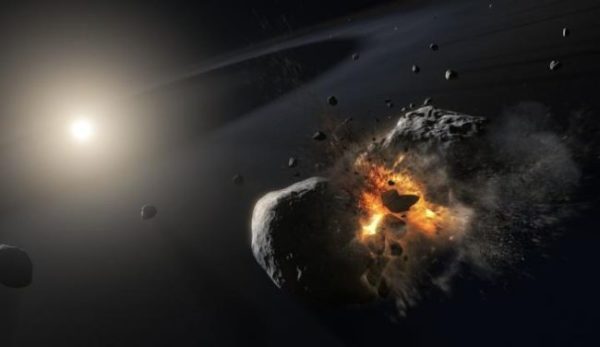
In 2014, a planet disappeared from the night sky.
The distant world — known as Fomalhaut b and located a neighborly 25 light-years from Earth — was infamous for being one of the first exoplanets ever discovered in visible light by NASA’s Hubble Space Telescope; when astronomers first caught sight of it in 2004 and 2006, the planet appeared as a bright, cool dot moving briskly across the sky. Ten years later, that dot had vanished.
What happened to Fomalhaut b? Did the world have a falling out with its guardian sun (named simply Fomalhaut) and drift away? Did the brilliant planet seek stardom in a bigger, brighter solar system? Or could a nefarious case of planet-on-planet violence be afoot?
A new study published today (April 20) in the journal Proceedings of the National Academy of Sciences (PNAS) proposes a solution to the “Mystery of the Disappearing Exoplanet” — and, befitting of any good detective story, there’s a twist ending. Perhaps, Fomalhaut b disappeared before the Hubble’s eyes, the study authors wrote, because Fomalhaut b was never a planet in the first place; in this scenario, the object astronomers saw in 2004 and 2006 was actually a colossal cloud of icy debris created by a recent, violent collision between two planetary fragments.


